We join Chef Raymond Blanc to visit an apple and pear farm and see one of the UK’s food treasures begin its glorious, and green, journey to your fruit bowl.
Apples, apples everywhere – Gala, Braeburn, Jazz, Cox and English Bramley. The colours sing off the trees in all directions on Boxford Farms giant apple and pear orchards in Suffolk . Reds, greens, bicoloured and yellows and all shades in between.
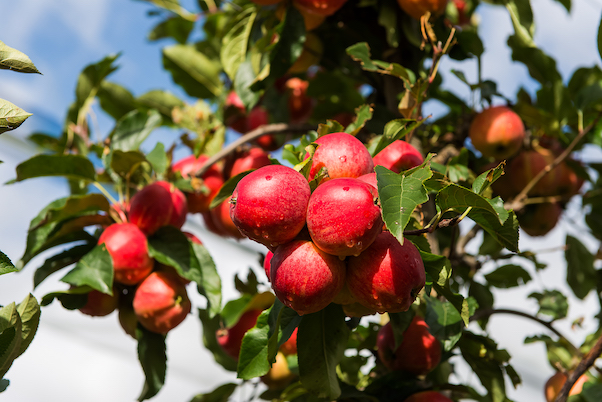
The colours are especially vibrant this year as Ali Capper, Executive Chair of British Apples &; Pears Limited who is with us in the field explains: “Most British dessert apples have a beautiful colour to their skin that is created, in part, by our fantastic maritime climate which lets the apples mature slowly, and this year is no exception.” It’s why apples from abroad rarely please the eye as much.
And let’s talk about ‘green’. Robert Rendall from Boxford Farms, a third-generation family business, is enthusiastic about his growing methods. “As a business we already produce more green energy and recover more water than we use, and it is our goal to be a carbon sink by 2027.”
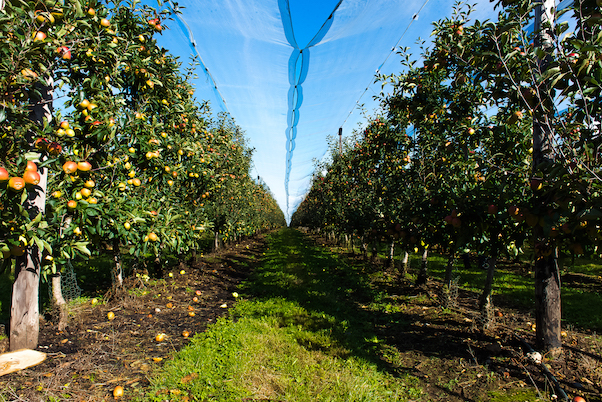
Like 93% of growers he uses biodiversity measures, such as varied grasses and wildflowers to encourage insects, as well as creating beetle banks and bee hotels to encourage natural pollinators.
Nothing goes to waste here, the apples that naturally fall before they can be harvested are not allowed into the food chain by law, but they make excellent fodder for the farm’s Anaerobic Digester. This turns the apples into Biogas, enough gas to produce heat and electricity for the farm’s needs and often enough surplus to sell.
Chef Raymond Blanc nods approvingly at Robert’s words and crunches into another apple. We’ve only been out here fifteen minutes and he must have already eaten three at least, he certainly takes his role as ambassador seriously.
A few minutes later he’s got another apple in his hand, as he good naturedly follows the tabloid photographer’s directions to stick his head through a wall of apple trees and bite down for the camera.
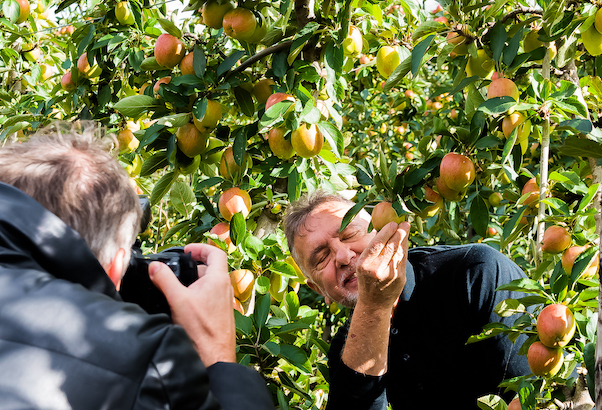
“Britain produces some of the finest apple and pear varieties in the world,’ he says, ‘and it is hugely important to me that we support our home grown produce. With so many wonderful varieties available this season in an array of beautiful colours, textures and flavours, there really is a British apple to delight everyone.”
And he says we should all recognise the work that goes into getting apples to us as we’re shown how the apples are harvested, always by hand as no machine can beat the skill of a human picker.
Ripe for picking
Firstly it’s about knowing when the apple is right. That comes with experience, but also today by science. One device that’s used tests the firmness of the apple on the tree – rock hard is under ripe, the apple should give to the teeth.
Then there is the starch iodine test. As apples ripen their starch is replaced by sweetness. The test apple is stained with a 4% potassium iodide/1% iodine solution. As the apples become ripe, they go from a dark iodine staining to a lighter staining.
And finally there is the refractometer; a small amount of juice from the fruit is squeezed onto the prism of the refractometer which is then held up to the light and the percentage of soluble solids is read by looking through the lens. Chef Raymond has a go and soon resembles Admiral Nelson looking for ships.
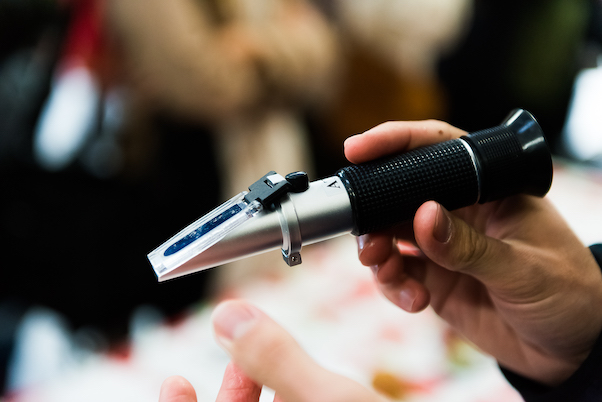
It’s in the wrist action
Every aspect of the harvest is an exercise in care. Each apple is picked by a twisting wrist movement, ‘you never pull,’ I am advised by a pro who is watching me carefully as I try. ‘Twisting means the little spur branch stays on the tree to produce fruit next year, and there’s less risk of shaking other apples to the ground. And use your palm to grasp,’ he admonishes me, ‘not your fingers which might bruise the apple. If the apple doesn’t want to come away easily, it’s not ripe so leave it.”
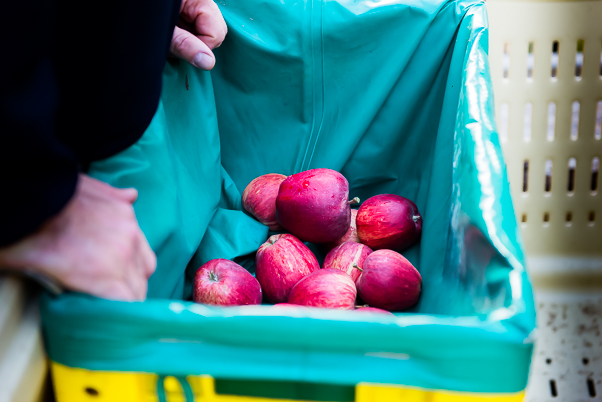
Each apple is carefully placed in a cloth lined box on the tractor hopper- never dropped in. When the box is full the apples are gently transferred to the main hopper.
‘We take all this care,’ one of the pickers says ruefully ‘and then I go into some supermarkets and see the shelf fillers just tumble the apples in!’
That is a shame, we all should respect English apples, an original and unique English crop that’s been grown here commercially since Henry VIII set up the first large-scale orchards in Kent.
An apple a day
So do try as many varieties as you can, as they are all in their prime and in the shops now.
Try them with cheese, for example, apples partner excellently alongside cheeses with each variety’s unique textures and tartness add to the taste experience. Sweet is not always the most exciting kind of apple, although it remains the most popular.
British Apples are a sustainable green choice, endorsed by a top chef and easily enjoyed by everyone. Look out for them in the shops from this week onward.
Try these delicious apple recipes.
